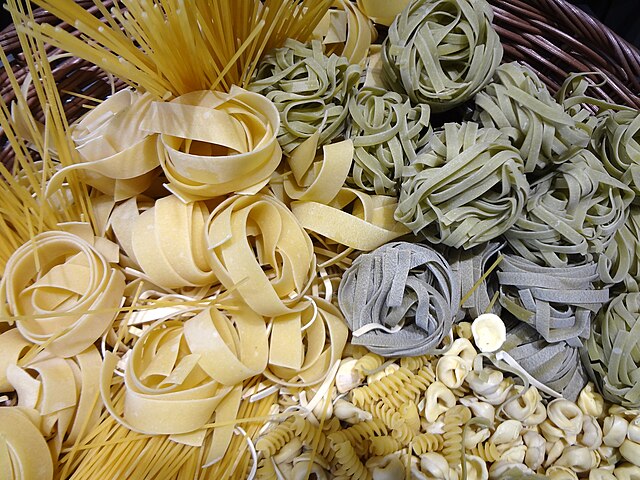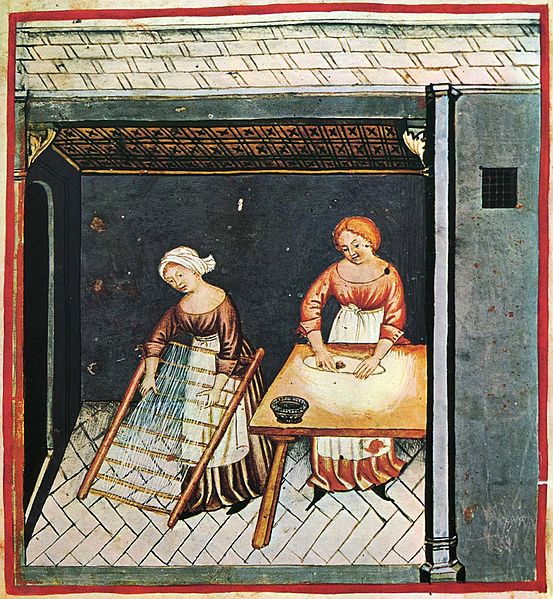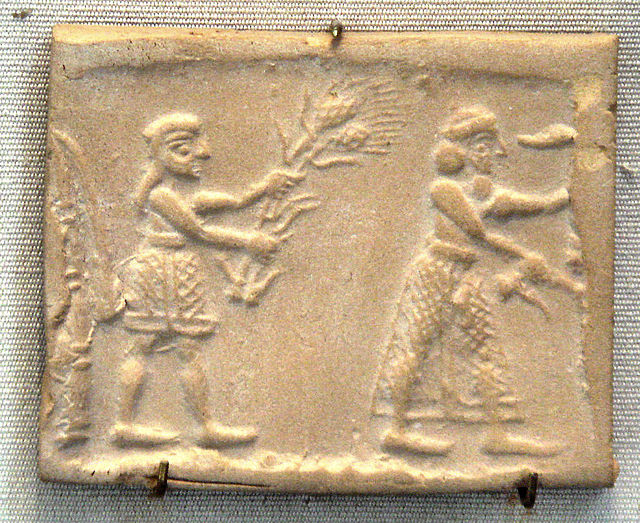Pasta is a type of food typically made from an unleavened dough of wheat flour mixed with water or eggs, and formed into sheets or other shapes, then cooked by boiling or baking. Pasta was traditionally only made with durum, although the definition has been expanded to include alternatives for a gluten-free diet, such as rice flour, or legumes such as beans or lentils. While Asian noodles are believed to have originated in China, pasta is believed to have independently originated in Italy and is a staple food of Italian cuisine, with evidence of Etruscans making pasta as early as 400 BCE in Italy.
A collection of different pasta varieties
Making pasta; illustration from the 15th century edition of Tacuinum Sanitatis, a Latin translation of the Arabic work Taqwīm al-sihha by Ibn Butlan
Boy with Spaghetti by Julius Moser, c. 1808
Typical products shop in Naples, Italy, with pasta on display
Wheat is a grass widely cultivated for its seed, a cereal grain that is a worldwide staple food. The many species of wheat together make up the genus Triticum ; the most widely grown is common wheat. The archaeological record suggests that wheat was first cultivated in the regions of the Fertile Crescent around 9600 BC. Botanically, the wheat kernel is a caryopsis, a type of fruit.
Wheat
A: Plant; B ripe ear of corn; 1 spikelet before flowering; 2 the same, flowering and spread, enlarged; 3 flowers with glumes; 4 stamens 5 pollen; 6 and 7 ovaries with juice scales; 8 and 9 parts of the scar; 10 fruit husks; 11, 12, 13 seeds, natural size and enlarged; 14 the same cut up, enlarged.
Sickles with stone microblades were used to harvest wheat in the Neolithic period, c. 8500–4000 BC
Sumerian cylinder seal impression dating to c. 3200 BC showing an ensi and his acolyte feeding a sacred herd wheat stalks; Ninurta was an agricultural deity and, in a poem known as the "Sumerian Georgica", he offers detailed advice on farming








